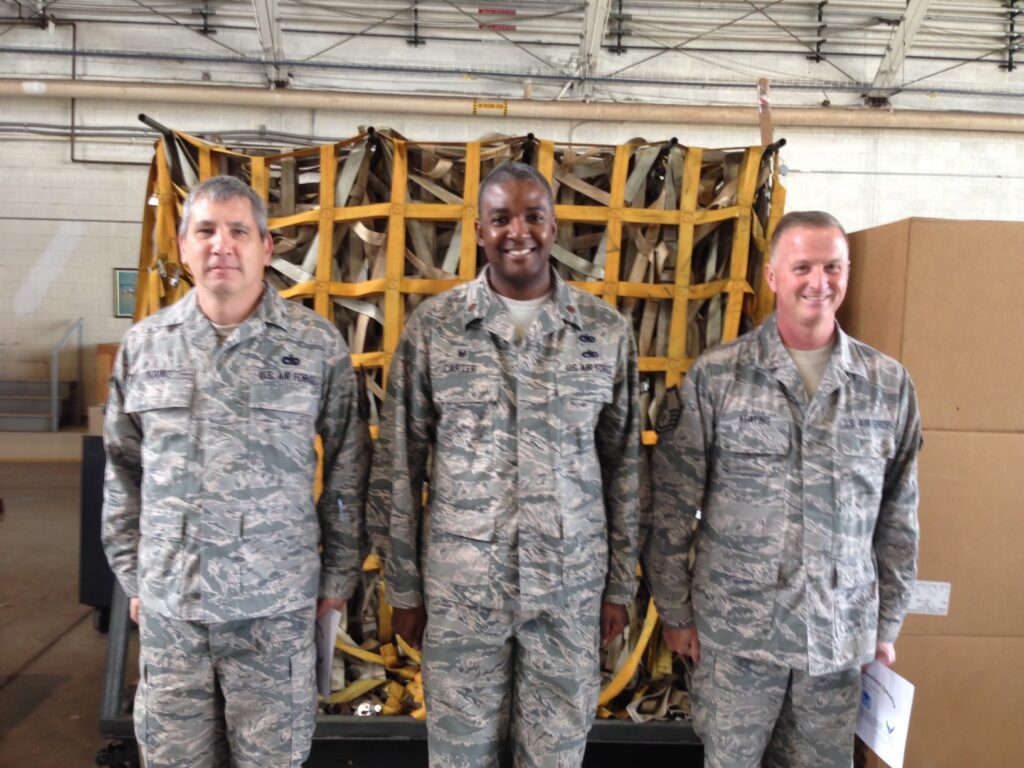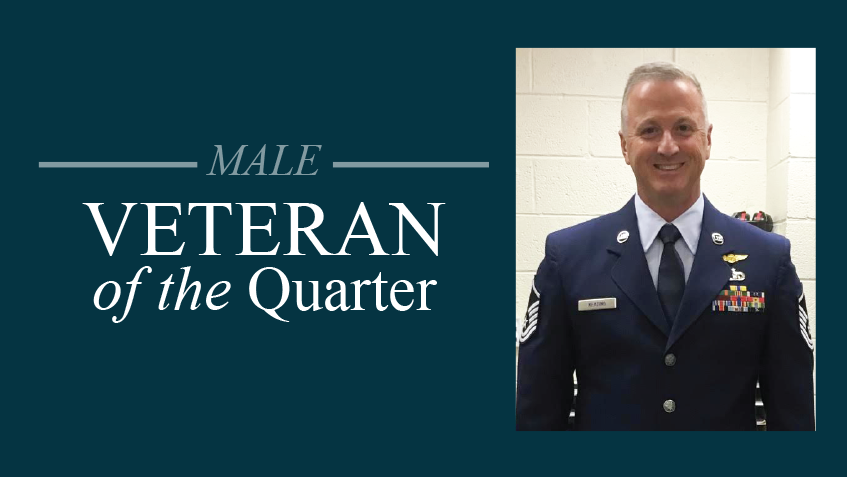This article is written by and features Richard L. Keating
As with any military story we start off with ‘There I was’… it was 1988 and I was three years into my dream job as a computer programmer at Chase Manhattan bank. I had spent 5 years of night school at Delaware Tech (in Wilmington) preparing for my dream job and now that I had it, I wanted nothing more than to bail out and forget all about it.
It was a summers afternoon, and I was in the break/visual relief area of the 13th floor of the Chase building staring out over the city skyline contemplating my bleak future sitting in a cubicle. One of my coworkers entered the room and proceeded to the vending machines. He was an older gentleman and I had worked with him on a few projects and found him to be an excellent analyst but knew little about him personally.
He always seemed at ease and projected an air of confidence. I couldn’t contain myself and asked him how he was able to spend a career sitting in an office cubicle without losing his mind. He eyed me for a moment and with a slight smile told be of his first career a submarine commander in the Navy. Like a slap it reminded me of my earlier dreams of joining the Navy and seeing the world before family and career took precedence.
We talked and I told him my bygone dream of joining the Navy. That’s when he asked me if I had ever thought of joining the Naval Reserve. I had never heard of the reserve and now the thought and the possibilities were intriguing.
Within days I had contacted the nearest reserve recruiter and scheduled an appointment. After vetting me against criminal databases and verifying my identity I was scheduled for the ASVAB. For those unfamiliar with the term is stands for Armed Services Vocational Aptitude Battery. No stress but the better you score on the ASVAB the more job possibilities you qualify for.
I took the test at the Philadelphia Military Entrance Processing Station (MEPS), my score qualified me for all but the SEAL and Nuke programs as these required a 5-year active-duty commitment. This left a lot of jobs or Rates as they are called in the Navy to choose from. The recruiter strived to assist me in choosing the best job. He offered me an Optics rate where I was told I may spend my weekends at the Naval Observatory, a Mine-man position where I would work on live mines (the kind that go Boom).
I passed on anything that may blow me up. They tried to have me become a DP (Data Processor) but seeing as this is the career I was trying to escape, I passed. Finally, I was asked if I wanted a leather flight jacket. Now we’re talking. We were soon talking about the AW rate (Aviation Anti-Submarine Warfare). AW’s were aeronautically designated meaning they flew as aircrew on Navy aircraft such as the P-3 Orion, helicopters and S-3 Vikings and they wore gold aircrew wings. I was hooked and on Sept 28th, 1988, I was sworn into what would become a 32-year career. I joined under the Sea Air Mariner (SAM) program. This allowed me to attend active-duty boot camp, A school (where you learn your job), Aircrew School, Rescue Swimmer School, and a stint at a local squadron until I was deemed qualified in my job.
My first squadron was the HSL-94 (Titans) at NAS Willow Grove above Philadelphia PA, where I served as a rescue swimmer and helicopter crewman. In addition to my swimmer duties, I operated the RADAR, sonobuoy processing equipment (like microphones in the water listening for subs) and the Magnetic Anomaly Detection (MAD) equipment (like a big metal detector for finding subs under water). During my time with HSL-94 I deployed to FFGs (Guided Missile Frigates) where our mission was counter narcotics in the Caribbean and spent time at AUTEC (Atlantic Underwater Test Evaluation Center) in the Bahamas honing my sub hunting skills and dropping torpedoes on the range. As with most great gigs it eventually came to an end. The squadron and its H-2 helicopters was decommissioned and reestablished as an SH-60 (newer helicopters) squadron in Mayport FL.
 Still in the reserves and in need of a squadron I joined the VP-64 Condors a Maritime Patrol squadron located in the hanger next door at NAS Willow Grove as a sensor operator. The squadron and the airframe were different, VP-64 flew P-3C (big, fixed wing aircraft) patrol planes, but the mission was familiar. Instead of conducting counter narcotics flights off ships we deployed to airfields. All was good for about a year until the reserves upgraded the avionics package on our P-3C to the P-3 BMUP. The BMUP’s new sub hunting abilities were a step up from the active-duty Navy and they wanted our aircraft, so slowly our squadron of 7 dwindled to a few.
Still in the reserves and in need of a squadron I joined the VP-64 Condors a Maritime Patrol squadron located in the hanger next door at NAS Willow Grove as a sensor operator. The squadron and the airframe were different, VP-64 flew P-3C (big, fixed wing aircraft) patrol planes, but the mission was familiar. Instead of conducting counter narcotics flights off ships we deployed to airfields. All was good for about a year until the reserves upgraded the avionics package on our P-3C to the P-3 BMUP. The BMUP’s new sub hunting abilities were a step up from the active-duty Navy and they wanted our aircraft, so slowly our squadron of 7 dwindled to a few.
One day as I stood on the flightline with the command Master Chief I asked what was going to happen to us when all the planes were gone. He said, “Funny you should ask. Here comes the future of reserve aviation”. Just then on the horizon I saw a big lumbering aircraft making its way toward the airfield. This was my first glimpse of the C-130T cargo plane and little did I know it would become my favorite aircraft.
Soon after I was again part of a squadron decommissioning (VP-64) and commissioning of a new one (VR-64). We moved from maritime patrol to a cargo moving logistics squadron overnight. Many of my AW friends moved to other VP squadrons but I volunteered to stay with the C-130 and become a loadmaster. Loadmasters are responsible for loading the aircraft and determining its weight and balance to ensure it flies within safe limitations. Cargo consisted of anything the active-duty Navy could need from moving SEAL teams, bombs, bullets, and bandages to girl scout cookies. We moved it all.
The most interesting cargo I ever moved were the dolphins the Navy uses for port security. The best part of being a load master was the travel, this is why I joined the Navy, to see the world. The squadron had regular deployments to Bahrain, Sigonella Sicily and Atsugi Japan. While deployed there were missions to Spain, Australia, and many other exciting locations. It was at this time in my career that I opted to take an active-duty mobilization for 3 years as part of Operation Enduring Freedom (OEF). I completed my tour of duty and its many adventures returning to the life of a citizen sailor.
The year was 2011 and I found myself supporting the family once again as a computer programmer. Though this time I was choosing the assignments as an independent consultant, better pay and working conditions. I was finding it increasingly difficult to support squadron missions while maintaining a work/family balance. A friend of mine had transferred to the Delaware Air Force Air Guard as a C-130 flight engineer and invited me to talk to a recruiter. A few phone calls later and I found myself leaving the Navy and joining the Air Force. To maintain balance in my life I opted to forgo the aircrew life as it would have also required me to attend all the Air Force aircrew training, requiring an additional year of active duty. Instead, I took a position as an Air Transportation Specialist. This new position allowed me to remain local to my home while maintaining all my reserve benefits.
Upon retirement I had accumulated 32 years 8 months and 8 days of continuous service and a lifetime of fond memories.
Other Roles:
- Ordained with Universal Life Church on 11/1/1012
- Served on the Vice-Presidential Support Detail while with the Delaware Air Guard
Read more articles from VOM Magazine here: https://www.veteransoutreachministries.org/vom-magazine/





